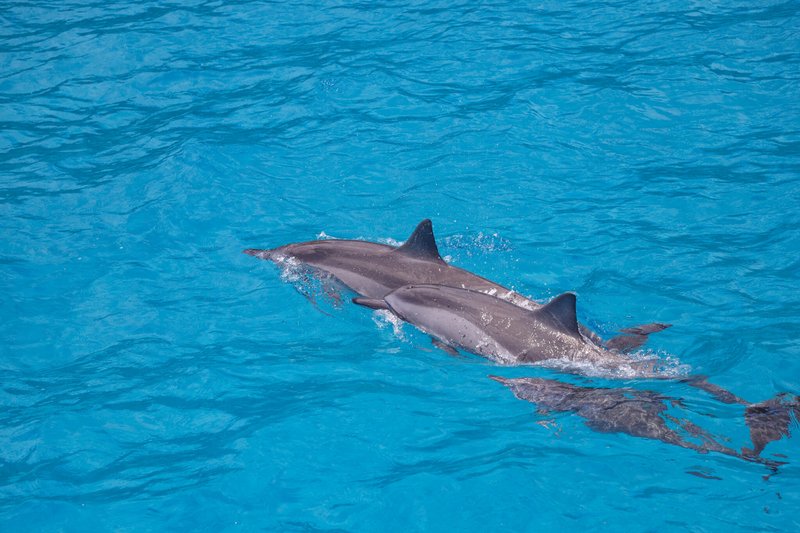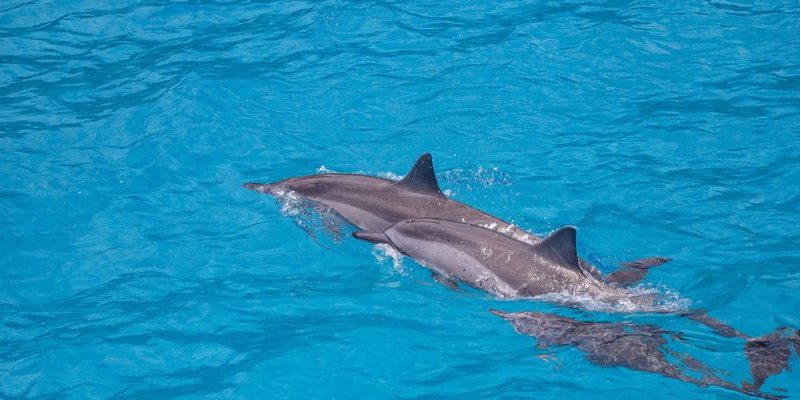
You might be wondering, why focus on just one species? Well, spinner dolphins are key indicators of marine ecosystem health. Their struggles reflect larger problems in our oceans that affect many marine animals, including ourselves. Just like how the canary was used in coal mines to detect dangerous gases, the wellbeing of spinner dolphins can signal broader environmental issues. Let’s dive into the common threats these fascinating creatures face in the wild and what we can do to help protect them.
Habitat Degradation
One of the biggest threats to spinner dolphins is habitat degradation. As coastlines get developed and polluted, their natural environments suffer. Imagine living in a neighborhood where the parks are turned into parking lots. That’s kind of what’s happening to spinner dolphins.
Coastal development often leads to increased boat traffic, which can disrupt the dolphins’ feeding and breeding grounds. When natural habitats like coral reefs are damaged, spinner dolphins lose their homes and food sources. This degradation not only affects spinner dolphins but also the entire marine ecosystem. Without healthy habitats, every creature in the food chain can feel the pinch.
Additionally, pollution from land runoff, including plastic waste and chemicals, harms the water quality. Dolphins rely on clean waters for hunting fish and shrimp, their primary food sources. If their food sources are tainted, that can lead to serious health issues for the dolphins themselves.
Fishing Practices
Commercial fishing practices pose another significant threat to spinner dolphins. Bycatch, which refers to the unintentional capture of non-target species, is a critical issue. Imagine a fisherman casting a net intended for fish and accidentally trapping dolphins instead. That’s happening more often than we’d like to think.
Many fishing nets and gear are not selective, meaning they catch everything in their path. Spinner dolphins can become entangled in these nets, leading to injury or even death. Moreover, overfishing depletes their prey, making it harder for them to find food. If dolphins can’t find enough to eat, their populations can dwindle, causing long-term problems for the species.
The fishing industry needs to adopt more sustainable practices. Solutions like using dolphin-safe nets and implementing better fishing regulations can help safeguard these amazing creatures while still allowing fishing to occur.
Noise Pollution
You might not think about it, but noise pollution is a significant issue for spinner dolphins. These animals communicate with each other using a variety of clicks and whistles. It’s like their language! When boats, industrial activities, or even underwater construction create a cacophony of sounds, it can drown out their communication.
Imagine trying to have a conversation in a crowded restaurant—frustrating, right? That’s what spinner dolphins experience. This interference can lead to stress and disorientation. It can also hinder their ability to find mates, raise young, and navigate through their environment.
To combat this, we need to push for stricter regulations on boat traffic in areas where dolphins are known to frequent. Creating quieter zones or limiting boat speeds can significantly reduce noise pollution and help spinner dolphins thrive in their natural habitats.
Climate Change
Climate change is an overarching threat that impacts every corner of the planet, including the oceans where spinner dolphins live. Rising sea temperatures can lead to coral bleaching, impacting the delicate ecosystems that support fish populations. Without healthy coral reefs, spinner dolphins lose vital feeding grounds.
Moreover, climate change can alter ocean currents and food availability. As certain fish migrate to cooler waters, dolphins may find it challenging to track their prey. This situation can significantly impact their feeding habits and overall health, leading to reduced populations over time.
We all play a role in combating climate change, from reducing our carbon footprint to supporting sustainable initiatives. Even small changes in our daily habits can contribute to a healthier planet.
Interactions With Humans
While human interaction can sometimes be positive, it often presents dangers for spinner dolphins. Tourists may want to swim with or observe these dolphins in the wild, which can seem harmless. However, many encounters can stress the animals or disrupt their natural behaviors.
Dolphins are curious creatures, and they often approach boats out of curiosity. But this can lead to dangerous situations, such as collisions with boats or harassment by tourists. Dolphins may also be inadvertently fed by boaters, which can alter their natural foraging behaviors and dependency on human food sources.
To protect spinner dolphins, it’s essential to promote responsible wildlife tourism practices. Educating tourists on how to observe dolphins without disturbing them can make a significant difference. Always maintaining a respectful distance and never feeding wild animals can help preserve their natural behaviors.
Conservation Efforts
Fortunately, there are ongoing conservation efforts aimed at protecting spinner dolphins and their habitats. Various organizations are working tirelessly to raise awareness and implement strategies to mitigate these threats. Initiatives include habitat restoration projects, public education, and advocating for stronger fishing regulations.
You might consider supporting local conservation groups or volunteering for beach cleanups. Every little action adds up, and getting involved can help make a difference.
Moreover, promoting policies that protect marine environments can help create lasting change. By raising awareness about the threats spinner dolphins face, we can work towards solutions that ensure their survival for generations to come.
Understanding the common threats to spinner dolphins in the wild is the first step toward ensuring their future. Each of these challenges—from habitat degradation to climate change—requires our attention and action. It’s not just about saving one species; it’s about preserving the health of our oceans.
By advocating for better practices in fishing, reducing noise pollution, and supporting conservation efforts, we can help protect these incredibly dynamic dolphins. So, next time you think of spinner dolphins leaping through the waves, remember that they are more than just fun to watch—they are essential to the delicate balance of marine life. Let’s do our part to keep their world thriving.

